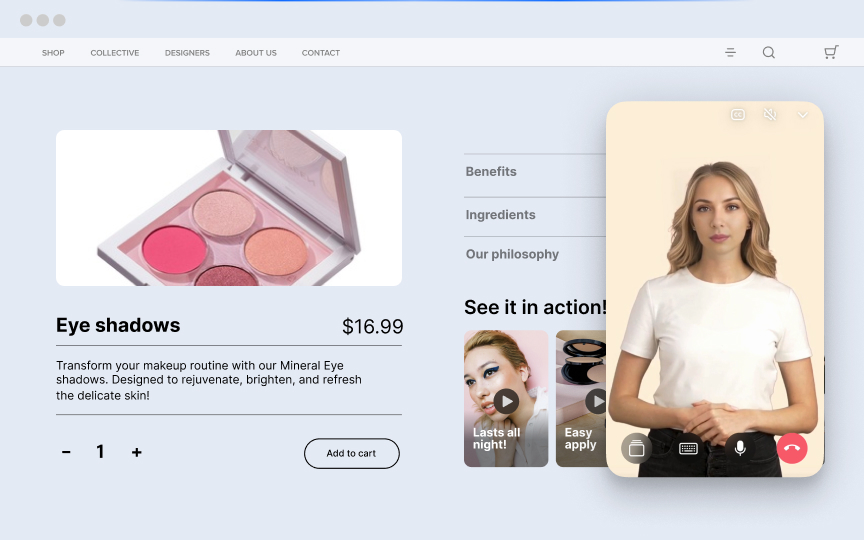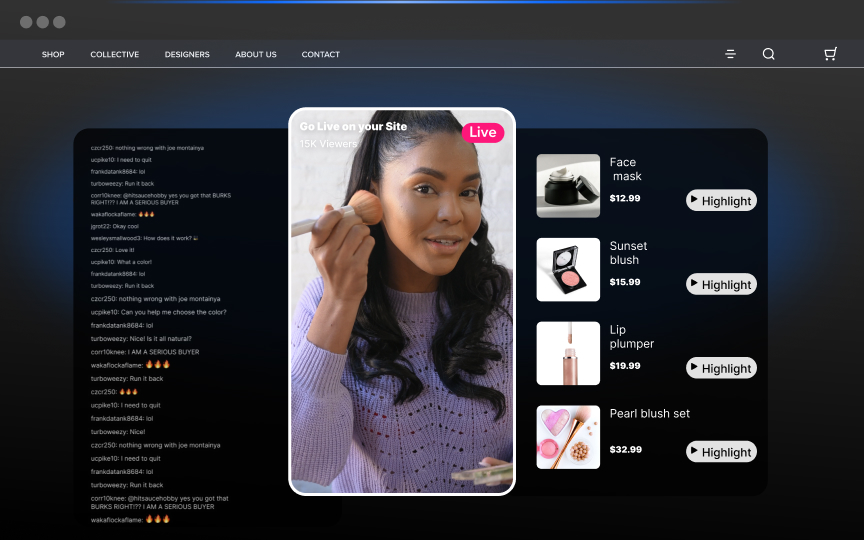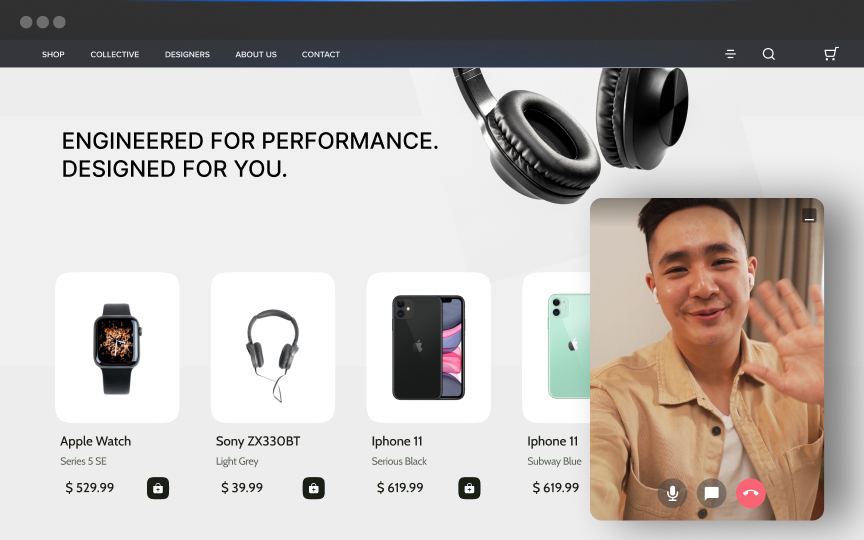How Can You Boost Influencer Marketing Strategy with Livestream Shopping?
Livestream shopping can greatly enhance your influencer marketing strategy by combining real-time engagement with the persuasive influence of popular personalities. This integration can drive brand awareness, increase sales, and reach new audiences.
What Are the Key Benefits of Livestream Shopping for Influencer Marketing?
Livestream shopping offers significant benefits for influencer marketing. Real-time interaction allows influencers to engage with their audience instantly, answering questions and showcasing products effectively. This creates a sense of urgency, encouraging viewers to purchase items immediately.Additionally, the interactive nature of livestreaming helps build trust. Viewers can see how products work in real-time, making them more likely to buy. Influencers can also offer exclusive deals during the stream, boosting sales and creating a unique shopping experience.Furthermore, live commerce provides valuable data. Marketers can track viewer engagement, product interest, and sales metrics to refine future campaigns. This combination of real-time feedback and influencer credibility can lead to a successful marketing strategy for brands.
How to Integrate Livestream Shopping into Your Current Influencer Marketing Strategy?
To integrate livestream shopping into your current influencer marketing strategy, start by selecting the right influencers. Choose individuals who align with your brand values and have a strong, engaged following.Next, plan the livestream content. Ensure the stream is engaging and informative, showcasing products in an entertaining way. Consider including interactive elements like live Q&A sessions or exclusive discounts to boost viewer participation.Promote the livestream in advance through social media, email newsletters, and your website. This helps drive traffic and ensures a larger audience. After the event, analyze the performance to identify what worked and what didn’t, and adjust future livestreams accordingly.Also, collaborate closely with influencers to ensure they understand your brand message and goals. This collaboration will make the live shopping experience seamless and effective.
Which Platforms Are Best for Livestream Shopping in Influencer Marketing?
Selecting the right platform is crucial for successful livestream shopping. YouTube is a popular choice due to its large user base and robust livestreaming features. It allows for easy integration with other social media platforms, expanding reach.Instagram Live is another excellent option. It’s particularly effective for reaching a younger audience and offers features like real-time comments, which enhance viewer engagement.Facebook Live is suitable for reaching a broad demographic. Its user-friendly interface and extensive sharing options make it a versatile platform for livestream selling.Amazon Live is ideal for direct product sales. It’s integrated with Amazon’s shopping platform, making it easy for viewers to purchase items during the stream.Using a combination of these platforms can help maximize the impact of your influencer livestream campaigns.
What Metrics Should Marketers Focus on for Livestream Shopping?
To make the most of livestream shopping, marketers need to track specific metrics that reflect engagement and conversion rates. These metrics will help in understanding customer behavior and ROI from livestream events.
How Do You Track Engagement Metrics During a Livestream?
Engagement metrics show how viewers interact during livestreams. Key metrics include real-time engagement, such as the number of likes, shares, and comments. Marketers should also pay attention to the average watch time to see how long viewers stay engaged.Live chat is another critical metric. By monitoring live chat participation, one can gauge how actively viewers are involved. Tools like Facebook and Instagram provide analytics on user interactions, helping to measure engagement accurately.Click-through rates (CTR) can also be essential. They indicate how many viewers are clicking on links shared during the event. Tracking these metrics helps in understanding what captures audience interest and drives them towards making purchasing decisions.
What Are the Conversion Metrics to Watch for Livestream Shopping?
Conversion metrics provide insights into how effectively a livestream turns viewers into buyers. Conversion rates are vital; they measure the percentage of viewers who make a purchase during the event. It's crucial to track how many viewers proceed from interest to completing a sale.Revenue generated from each livestream is another important metric. This includes both immediate sales during the event and purchases that happen shortly afterward. It's useful to compare revenue across different livestreams to identify which strategies work best.Tracking ROI helps in measuring the effectiveness of marketing spend on livestreams. By comparing the costs of hosting the event to the revenue generated, marketers can assess the profitability. Tools like TikTok and Taobao provide analytics that help in tracking these metrics accurately.
How Can Livestream Shopping Drive Traffic to Your Online Store?
Livestream shopping can create an engaging and interactive experience that draws in viewers and converts them into customers. It combines the convenience of online shopping with the emotional connection of live interaction.
What Strategies Increase Traffic Through Livestream Events?
To boost traffic through livestream events, businesses should focus on creating a compelling and interactive experience. Limited-time offers are effective in attracting viewers and encouraging immediate purchases. This sense of urgency can significantly increase traffic and conversion rates.Another strategy is promoting the livestream across multiple social media platforms well ahead of time. Advertising the event on Facebook, Instagram, and other channels can draw a larger audience.Using giveaways and contests during the livestream also keeps viewers engaged and more likely to stay until the end, increasing the chances they will visit your online store.Interactive elements like Q&A sessions and polls can further engage viewers, making them feel part of the event, thereby driving more traffic to your store.
How to Leverage Influencers to Maximize Traffic from Livestreams?
Influencers can be powerful assets in driving traffic to your online store through livestream shopping. Partnering with well-known influencers can expand your reach to their large follower base. This can attract their audience to your livestream and, ultimately, your store.Influencers can also create buzz ahead of the event by posting teasers and promotional content. This helps build anticipation among their followers, maximizing attendance during the livestream.During the livestream, influencers can use their credibility to showcase products authentically. By doing so, they can build trust and encourage viewers to make a purchase.For more insights, check out this comprehensive guide on livestream shopping. Using these strategies, businesses can leverage influencers effectively to drive significant traffic to their online stores.
What Are the Best Practices for Hosting a Livestream Shopping Event?
To host a successful livestream shopping event, it is crucial to prepare your team and influencers properly and to address technical aspects thoroughly. This ensures a smooth and engaging experience for the audience.
How to Prepare Both Influencers and Your Team for a Livestream?
Preparation starts with clear communication. Brief influencers on the event's goals, product details, and key messages. Ensure they understand the theme and schedule of the livestream.Train your team to handle live interactions. Assign roles for managing real-time questions and comments. This keeps the event flowing smoothly.Engage your audience in advance through social media platforms like Instagram and Facebook. Announce special offers, exclusive discounts, and product demonstrations. This builds anticipation and activates FOMO (Fear of Missing Out).Provide influencers with product samples. They can offer authentic reviews and live tutorials, adding credibility. Sharing behind-the-scenes content with the influencers also builds a connection with the audience.
What Technical Considerations Are Essential for a Seamless Livestream?
Technical smoothness is key. Start by choosing a reliable livestreaming app or platform like YouTube or Amazon Live. Test internet speed to avoid disruptions.Invest in good quality video and audio equipment. Clear video content and sound enhance viewer engagement. Ensure proper lighting to make products look appealing.Plan a backup for unexpected issues. Having technical support on standby can help resolve glitches quickly. This minimizes downtime and maintains audience interest.Test all hardware and software before going live. Check the livestream settings for chat options, age restrictions, and monetization. This ensures the livestream meets all necessary criteria.Schedule a rehearsal. A practice run helps both the team and influencers become familiar with the flow. It also allows for troubleshooting any technical snags ahead of time.
How to Choose the Right Influencers for Livestream Shopping?
Selecting the right influencers for livestream shopping is crucial. It ensures that brands reach the right target audience and build trust through authentic connections.
What Criteria Should You Use to Select Influencers?
When choosing influencers, brands should look for authenticity. Genuine interaction with their followers is key. Influencers who frequently engage with their audience build better trust. Considering the target audience is crucial. If your brand caters to Gen Z, nano-influencers with a smaller but highly engaged follower base could be more effective.Follower count is another criterion, but it's not just about numbers. An influencer with fewer yet more engaged followers might deliver better results. Content quality and alignment with brand values must also be evaluated. Ensuring that their style and message align with your brand enhances authenticity.
How to Evaluate the Success of Influencers in Livestream Shopping?
Evaluating the success of influencers in livestream shopping involves several metrics. Engagement rate is important. A high engagement rate indicates that followers are interested and likely to make purchases.Conversion rate is critical too. It reflects how many viewers become buyers. Tracking live chat interactions during the livestream can provide insights into audience interest and immediate response to products.Another essential metric is the reach and impressions. These indicate how widely the livestream was viewed. Lastly, brand awareness generated through these sessions can be measured via social media mentions and new followers gained during and after the livestream.For more details on how brands can leverage influencer marketing, visit Influencer Marketing Hub's guide.
What Are Common Mistakes to Avoid in Livestream Shopping?
Many marketers face hurdles when executing livestream shopping events, such as technical glitches and inappropriate content. These issues can negatively impact the overall effectiveness and viewer experience.
How to Prevent Technical Glitches During Livestreams?
Technical glitches can ruin a livestream shopping event. To avoid this, it is crucial to test all equipment beforehand. Cameras, microphones, and internet connections should be checked and tested repeatedly to ensure they work properly.Using reliable streaming software can help reduce the risk of glitches. It’s important to select software that aligns with your needs and test it in various scenarios. Make sure to have a backup plan, such as a secondary internet connection or spare equipment, to minimize downtime.Clear communication with the influencer involved is also key. Brief them about the technical setup and ensure they are comfortable with the tools. Regular practice sessions can help smooth out any potential issues.
What Content Pitfalls Should Marketers Watch Out for?
Content is king in livestream shopping. Marketers should avoid making the content too sales-heavy, as this can turn viewers off. Instead, focus on creating engaging and valuable content that highlights the product features naturally. Interactive elements like Q&A sessions and live demos can make the event more appealing.It's vital to avoid off-topic discussions. Staying focused on the product ensures the audience remains engaged. Make content relevant by tailoring it to the audience’s interests and needs.Additionally, ensure compliance with advertising standards and disclosure requirements. For specific strategies on how to integrate influencers into livestream shopping effectively, check out this Comprehensive Guide to Live Stream Shopping. Careful planning and adherence to guidelines can lead to a successful event.
Frequently Asked Questions
Brands often have questions about maximizing their influencer marketing strategies with livestream shopping. Below are answers to some of the most common inquiries on this topic.
How can brands measure the success of influencer marketing during livestream events?
Brands can measure success by tracking several key metrics. These include the number of viewers, engagement rates, and sales conversions during the livestream. Additionally, monitoring click-through rates and return on investment (ROI) can provide insights into the effectiveness of the campaign. Check out this ultimate guide to live shopping on YouTube for detailed steps on starting your livestream.
What are key tactics to engage viewers in a livestream shopping experience?
To keep viewers engaged, brands should utilize interactive features like live chat, Q&A sessions, and exclusive discounts. Creating urgency with limited-time offers can also drive sales. For more strategies, you can explore these ways to successfully livestream a shopping event.
What types of products or services are most effectively marketed through livestream shopping?
Products that benefit from visual demonstrations, such as beauty products, fashion items, and tech gadgets, tend to perform well. Services like online courses or workshops can also gain traction through livestream shopping. eCommerce has grown significantly, with revenues expected to hit $170 billion in China alone, as noted in this comprehensive guide to live stream shopping.
How do you identify and collaborate with influencers who can authentically represent your brand?
Look for influencers who align with your brand’s values and have an engaged, relevant follower base. Tools and platforms that analyze influencer metrics can help in selecting the right collaborator. Building long-term partnerships with these influencers can enhance authenticity and trust.
What role does audience interaction play in the effectiveness of livestream shopping?
Active audience interaction through features like live chat and Q&A sessions can significantly boost engagement and sales. Creating a sense of community and immediacy helps convert viewers into customers. To better understand live chat experiences, visit this resource on live chat interactions.
How should brands integrate influencer livestreaming into their broader marketing strategy?
Integrating influencer livestreaming requires a cohesive approach where the livestream complements other marketing efforts. This can include promoting the event across social media and email campaigns, and using the content for future promotions. Collaborating with experts in leveraging influencer marketing for successful livestream shopping can provide valuable insights.
Unlock Exclusive Insights
By submitting this form, you agree to Firework's privacy policy and consent to receive personalized marketing communications. You can unsubscribe at any time.

































